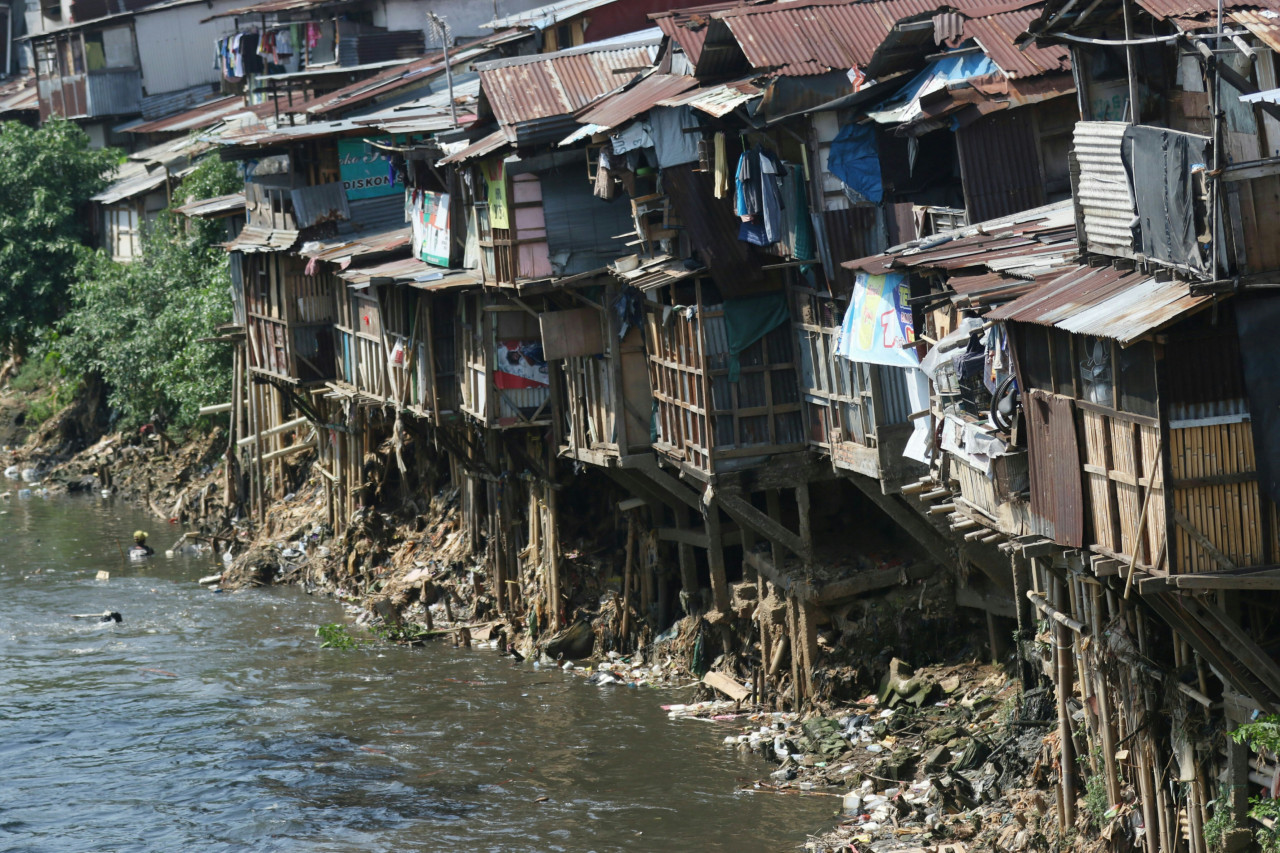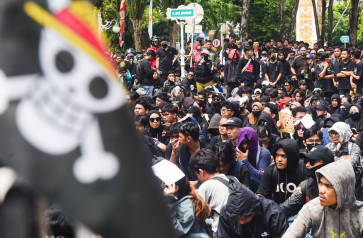Popular Reads
Top Results
Can't find what you're looking for?
View all search resultsPopular Reads
Top Results
Can't find what you're looking for?
View all search resultsForget downgrading and look toward revitalization
Industrial revitalization as part of structural transformation is key to both economic and welfare growth that Indonesia needs to escape the middle income trap.
Change text size
Gift Premium Articles
to Anyone
On July 1, the World Bank downgraded Indonesia to the lower-middle income category, which actually comes as no surprise despite the fuss and public disappointment over it.
Indonesia had just ascended to the upper-middle income category last July when its gross national income (GNI) per capita crossed the threshold by a mere US$50. Within months, the impacts of the COVID-19 pandemic reared their ugly head as the Indonesian economy contracted 2.07 percent and its GNI per capita dropped to $3,870. As a result, the country fell back to its previous ranking.
The pandemic has indiscriminately affected nations. Aside from Indonesia, a lot of countries have seen their GNI per capita decline as result of the global health crisis, and Iran, Belize and Samoa have also been relegated to the lower-middle income group.
Since Indonesia is still on the brink of crossing the threshold, bouncing back up to the upper-middle income ranking should not be a difficult undertaking in the next year or two. The prerequisite, of course, is that the country has to rein in the coronavirus to allow the economy to recover.
The real problem actually rests in the sluggish progress of welfare development, particularly over the last two decades. Economic growth and welfare development had already been slowing before the pandemic hit in March 2020. This will make it more difficult for Indonesia to complete its quest to close the gap with its more advanced developing peers, not to mention developed countries.
Indonesia’s per capita income is already well behind ASEAN neighbors like Malaysia and Thailand, which have respectively reached GNI per capita of $11,230 and $7,260. Thailand achieved upper-middle income status about a decade ago, while Malaysia did so nearly two decades ahead of Thailand.
Without accelerating the economy and improving the wellbeing of its population, Indonesia has a very long journey to achieving high income status. By the World Bank’s standards, the upper-middle income ranges from $4,096 to $12,695, a lot wider than the lower-middle income range, which only spans around $3,000. Indonesia has been in that category for about 25 years now. Assuming an average annual growth of 5 percent, similar to its pre-pandemic growth rate, Indonesia will need at least 70 years to reach high income status.
This means that the middle income trap is clearly looming over the horizon for Indonesia, as has been the case for several countries. Even some middle income countries that had achieved high income status like Brazil, and more recently Panama and Mauritius, have clawed their way back down to the middle income group.
It is true that economic growth alone does not guarantee improvements in welfare for all, especially the poor, and wealth distribution is another critical issue Indonesia should consider. Unfortunately, the country has not performed well enough in eradicating poverty and narrowing income inequality amid slow growth.
While the poverty rate may be falling, this decline is mainly the result of various government interventions such as social assistance, rather than empowerment programs and the creation of quality jobs. The government’s social assistance is crucial in helping the poor, especially during a time of crisis, but putting too much emphasis on this approach during normal times will make the poor less empowered and too dependent on government charity.
The limited creation of quality jobs has led to an increase in Indonesia’s unemployment rate, not only among the less educated, but also among the more educated and younger cohorts of the population. In the international arena, Indonesia’s lower-middle income status and lack of human development have also been reflected in the quality of its migrant workers. Over 98 percent of Indonesian migrant workers have been absorbed in low-paid blue-collar jobs that are often illegal or have weak legal status.
Learning from the experience of the East Asian tigers and China, it is very difficult to accelerate growth in the economy and social welfare without the role of he manufacturing industry. It is industry that can create multiple added value and massive employment.
By prioritizing the manufacturing sector as the main driver of economic growth, these countries could achieve supercharged growth that lasted decades. As a result, South Korea transformed from one of the world’s poorest countries to one of the richest ones. Similarly, a strong industrial push transformed China into one of the world’s economic superpowers rivaling the United States and freed more than half of its giant population from poverty.
Indonesia, in contrast, has been struggling with premature deindustrialization for more than 16 years, marked by persistent deceleration of manufacturing growth to a level below overall gross domestic product (GDP) growth and the sector’s shrinking contribution to the economy. This is an irony for a country with abundant natural resources and a huge workforce. As the manufacturing industry’s grip loosens, exports have become continuously dependent on commodities due to sluggish growth in manufactured exports.
To avoid weakening economic and welfare growth in the post-pandemic era, structural transformation is the only option for Indonesia. An important part of this transformation is industrial revitalization. Industrial development should be among the highest priorities and a grand design is imperative. This has to be a key performance indicator for all relevant ministries, not solely the Industry Ministry.
With such transformation, Indonesia will not only be able to boost economic growth to escape the middle income trap, but also quickly improve its per capita income to close the gap with more developed and high income countries; killing two birds with one stone, so to speak.
***
The writer is executive director of the Center of Reform on Economics (CORE) Indonesia.










